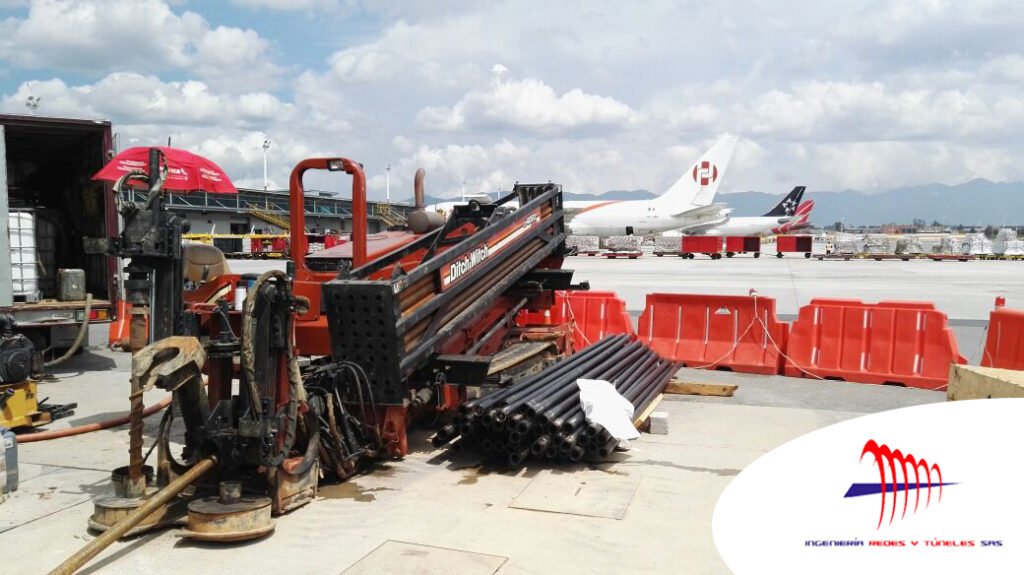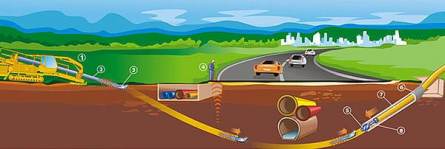- Cra 76 No. 68 b 35 Barrio Boyaca
- 601 702 6023
- 314 357 0144
- 314 357 01 80
- 317 510 59 86
- gerencia@redesytuneles.com
This directional drilling technique makes it possible to perform these types of drilling operations over significant lengths, even over 1,000 meters, crossing rivers, roads, airports, railways, native forests, wetlands, and other natural areas. The range of applications covers all types of drilling for oil and gas pipelines, drinking water pipelines, sewage systems, fiber optics for telecommunications, traffic light systems, and medium- and high-voltage power grids.

To properly plan the process, a thorough understanding of the route to be constructed is necessary, especially regarding existing utility lines and land properties.
The choice of machine depends on the length and diameter of the new pipe, and the type of soil. In pilot drilling, the most common problem is maintaining the layout and curvature. It is important to consider the presence of bentonite in the soil, as it can present resistance. Overcoming these problems requires significant pushing and pulling forces, which in many cases exceed the machine's capacity limits. For these cases, TT directional drilling machines with a built-in percussion system are available, which can be connected if necessary. The combination of drilling fluids and a percussion system enables forward and directional drilling in difficult Class 5 and 6 terrain.
This directional drilling technique makes it possible to perform these types of drilling operations over significant lengths, even over 1,000 meters, crossing rivers, roads, airports, railways, native forests, wetlands, and other natural areas. The range of applications covers all types of drilling for oil and gas pipelines, drinking water pipelines, sewage systems, fiber optics for telecommunications, traffic light systems, and medium- and high-voltage power grids.
